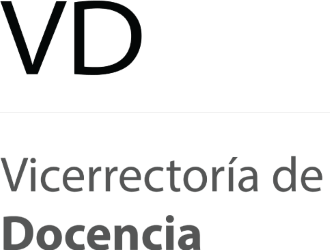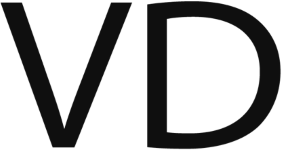International Chair of Media and Information Literacy
The International Chair of Media and Information Literacy and Interculturalism (CAII) proposes the analysis, study and reflection about interculturalism, multiculturalism and the informational culture from the perspective of internationalization and globalization, with special interest on media and information literacy.
Background and justification of the name and theme for the International Chair of Media and Information Literacy and Interculturalism
The trends of usage and development of the information and communication technologies in the first three lustrums of the 21st Century, as well as the migration flows have influenced the interdependence between people and nations, causing cultural, economic, technological, political and ecological shifts. The world has transformed in a “global village”, as Marshall McLuhan named this phenomenon. The regional alliances have transformed into the “new order” of the world of business and global markets.
In this scenario, the University of Costa Rica needs to assume a relevant role in promoting the democratization of Higher Education, preparing graduates capable to exercise their professions in a constantly changing environment, both at the local and the global levels.
The phenomena of internationalization, globalization and the new information and communication technologies (ICT) demand from graduates of Higher Education a set of skills that allow them to function in an intercultural and multicultural environment, mediated by technologies.
Thanks to the given conditions, the University of Costa Rica has an opportunity of leading and fostering a culture of peace -through its internationalization strategies-, forming professionals who are sensitive to cultures different to their own, and promoting media and information literacy from a critical perspective.
Thematic areas:
1. Internationalization
Internationalization, as an educational strategy, stimulates the University of Costa Rica to collaborate and cooperate with organizations around the world, as well as, achieving international standards for teaching and researching. Since we have one of the oldest exchange agreements between two institutions in this Hemisphere, it’s necessary to build a space for the analysis of internationalization, defined by Jane Knight (2015) as the process of integrating “the international, intercultural or global dimension into the goals, functions and delivery” (p. 108) of education after high school.
Many are the forms that internationalization takes in the University of Costa Rica. According to Zha Qiang (2003) in his study “Internationalization of Higher Education: towards a conceptual framework”, there are four ways to approach internationalization in Higher Education:
- The activity perspective, which promotes actions such as curriculum development, student and teacher exchange, technical assistance, international students, among others. This perspective had its peak relevance between the 1970s and 1980s. Its main disadvantage is the fragmented execution of efforts, lacking coordination between actors; it also doesn’t consider the impact of the implemented events, nor how they relate with each other.
- The competency perspective emphasizes the development of competencies, skills, attitudes and values in students, teachers, and administrative staff. The main aspect of this approach is acquiring intercultural knowledge and skills, therefore, the curriculum “is not an end in itself but a means towards developing the appropriate competencies in the students” (p. 250). As a consequence of this, the challenge is to determine which competencies will allow the students to succeed in the professional world.
- The ethos perspective promotes the creation of a climate or organizational culture that supports the international and intercultural initiatives. This perspective is related to the theories of organizational development, which consider that an organization must create and promote a system of values and beliefs to achieve their objectives and goals.
- The process perspective seeks to fuse and integrate the international and intercultural components into teaching, investigation and social action, through a variety of activities, public politics and procedures. The main objective in this approach is to guarantee both the continuity and sustainability of the international component, through politics and organizational procedures.
2. Multiculturalism and interculturalism
The teaching-learning process takes place in an organizational context with its own dynamics, which supposes a dialogical relationship with different social actors. The university, as a cultural apparatus reflects the values and thoughts of the society it belongs to, and also nurtures the “academic culture”, where each discipline has its own “identity” that transcends borders. In this sense, the culture provides identity in order to differentiate a group from another.
Stuart Hall, founder of Cultural Studies stated that “culture is about shared meanings” (1997, p.1), their production and exchange. Culture is not a set of practices, but a process; it’s how we make sense of the world. This implies that the concept is also related to where we’re going, what we could become, who we’ve been and who were our ancestors.
Multiculturalism is a public policy model rooted in a positive assessment of cultural diversity, while interculturalism arises as a response to the multicultural political model and seeks participatory and democratic access to political action for the different cultural actors among the nation.
About multiculturalism, Zygmunt Bauman (2004) states that it usually means an acknowledgement of ‘cultural pluralism’, but this approach usually has the effect of renaming politic and economic inequalities under the name of ‘cultural differences’. In this perspective, multicultural frameworks recognize cultural diversity but generally do not intend to change unequal dynamics related to it.
As a result, participating in multiple cultures and experiences in different communities, allows each person to build (in an appropriation and recreation process) their own mental models, their own “inner culture”, with the purpose of configurating themselves as pluricultural individuals. This means that interculturalism is situational in reference to pluriculturalism, which is cognitive, and multiculturalism, which is social.
3. Media and information literacy
There are many definitions for media education. Unesco (2011) proposed the following: “Media and Information Literacy: it’s the capability of consulting, understanding, and appreciating with a critical sense and creating content in the media”.
While in academic literature it’s possible to identify different perspectives about media and information literacy, there’s a consensus about the following principles: 1- all messages are “constructed”, 2- each media constructs its messages utilizing its own set of rules, 3- different people interpret the same media message differently, 4- media have embedded values and points of view, 5- most media are organized to gain profit and/or power and situated in a particular political-economic context (Elizabeth Thoman, 2003).
From this point of view, a media literate person must be capable of understanding and analyzing critically what they watch, listen, and read in books, newspapers, magazines, advertisements, television, radio, movies, music, videogames, Internet, and emerging technologies.
To be able to continue integrating the ICT in the teaching-learning processes, it’s urgent to design and implement strategies that boost the development of skills related to media and information literacy of the teachers, administrative staff, and students at the University level.
4. Information culture
Technological mediations have changed the way people and organizations produce, process, and exchange information. The values, beliefs and norms of an organization are reflected both in their administration and usage of information, in other words, its information culture, defined by Curry and Moore: “A culture in which the value and utility of information in achieving operational and strategic success is recognised, where information forms the basis of organizational decision making and Information Technology is readily exploited as an enabler for effective Information Systems.” (2003, p.94)
This definition exposes the complexity and the paradox that the digital gap generates in society. Because citizens require informational skills that allow them to assume a critical attitude towards these technological tools and media, to participate efficiently and effectively in everyday life.
The University of Costa Rica, since its creation, has welcomed and encouraged the adoption of the information and communication technologies in the academic and administrative areas, positioning itself at times in the forefront of the Central American and Latin American regions.
General and specific objectives of the Chair
1. General objective
To create a space for reflection, analysis and discussion about internationalization, multiculturalism, interculturalism and information culture, and their impact in Higher Education.
2. Specific objectives
a. To organize academic activities, such as courses, workshops, exchanges between institutions, conferences, special events, symposiums, seminars, among others, about interculturalism, multiculturalism, information culture and their impact in society.
b. To promote reflection, the exchange of ideas, and investigation about media and information literacy and its role in the development of country.
c. To implement activities that promote cultural exchange and socialization between people of other local and international cultures.
d. To stimulate the dialogue between academics, politicians, decision makers and civil society about media and informational literacy.
References
Bauman, Z. (2004). Identity. Cambridge: Polity Press.
Curry, A., y Moore, C. (2003). Assessing information culture – An exploratory model. International Journal of Information Management, 23(2), 91-110.
Hall, S. (1997). Representation: Cultural representations and signifying practices. London; Thousand Oaks, California: Sage.
Knight, J. (2015) International Universities: Misunderstandings and Emerging Models? Journal of Studies in International Education,19(2) 107-121
Qiang, Z. (2003). Internationalization of higher education: towards a conceptual framework. Policy Futures in Education, 1(2), 248-270.
Thoman, E. (2017). A Guided Tour of the Best Resources for Teaching Media Literacy. The Clearing House, 76(6), 278-283.
Wilson, C.; Grizzle, A.; Tuazon, R.; Akyempong, K.; Cheung, C.-K. (2011). Media and information Literacy: Curriculum for Teachers. UNESCO.


